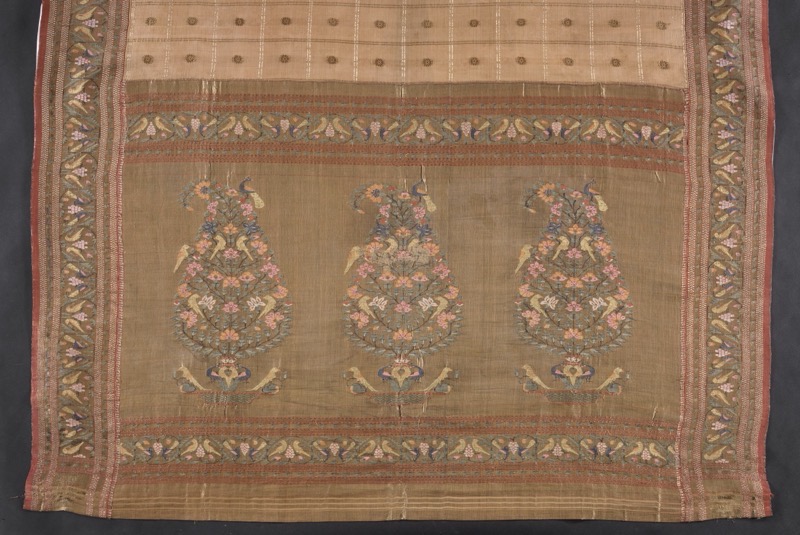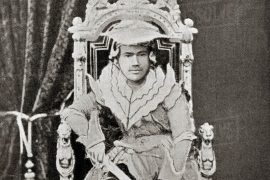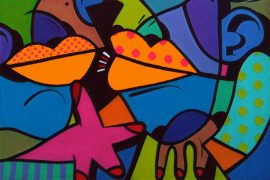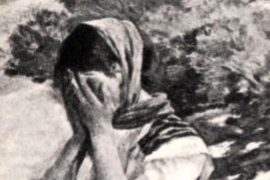The Indian textile industry is one of the largest in the world. After agriculture, the textile industry is the second largest employer. The handloom business is one of India’s oldest cottage industries, where the art of weaving is passed from one generation to the next.
Whilst this industry produces a dizzying array of sarees, there is one that rules them all, known as the Queen of Sarees. The Paithani is a well-known Maharashtra silk handloom saree, used in weddings. It is distinguished by its colour, pattern, motifs, gold zari pallu, weaving process, and durability.
More than a saree, the Paithani is considered a family heirloom, passed down from mother to daughter. It has long been favoured among Maharashtrian brides, who see it as a symbol of love.
It is believed that in the medieval period, during the Maratha empire, Paithani was woven using gold and silver thread. The Paithani could be purchased with gold coins weighed against the sari to determine the price.
The Paitani is believed to have originated from Paithan (near Aurangabad), founded in the first century B.C. as the capital of Satvahana rulers who ruled the region. Paithan had great access to India’s internal commerce networks as well as the historic Silk Route. The city was one of the leading textile-producing centres in Maharashtra during the Yadava period. There are references to weaving activity in Paithan dating back to the 2nd CE. It is here that the Queen of Sarees was developed using the finest of silk threads from China.
When the Moghuls, Nizam rulers, and Peshwas of Pune came, they encouraged and patronised the skill of weaving in Paithan. Paithan weavers migrated to Yeola (Yeolewadi) along the coast of Godavari in 1667 A.D. and the art thrived under the patronage of the Peshwas. The Paithani was favoured by royalty and was a mark of status and luxury.
The design of the Paithani saree has changed over centuries to reflect the culture and religion of rulers. The is seen in the motifs and patterns used, according to the designer Gaurang Shah. Traditional motifs such as parrots, peacocks, and lotuses have long been used.
The Hans motif, Ashraffi pattern, and Asawalli motif were popular throughout the Peshwa period. Muniya, a kind of parrot, was typically woven in green in the borders, with a playful touch of red on the beak.
Other designs featured on the pallus (drape over the shoulder) include the Panja, a geometrical flower motif mostly in red and the traditional Mor (peacock). The gleaming weave creates a joyful mixing of hues, giving the illusion of a moving scene.
Today, Paithan’s modern sarees are created using locally sourced silk thread from Bangalore and zari imported from Surat. A six-yard Paithani saree requires around 500 grammes of silk thread and another 250 grammes of gold zari threads. The nine-yard sarees can weigh up to 900 kilogrammes.
A Paithani sari can take anywhere from six months to two years to make, depending on the complexity of the pattern. A Paithani sari is distinguished from market forgeries by the fact that both sides of the sari are identical.
Paithani sarees remain an important fixture of Maharashtrian culture today. The Queen of Sarees is to the Maharashtrians what the Kanchipuram saree is to the South, a must-have for significant and festive occasions, particularly weddings.
The traditional weave has been given a makeover over the years as modern brides look for fresh ways to embrace their ancestry. Maharani Chimnabai of Baroda fashioned her signature Nauvari drape, which became an inspiration for modern brides to pair Paithani with a long jacket blouse.
Gaurang Shah presents many ways to style the saree with modern innovation. Brides today could even drape the Paithani like a gown like Suniti Devi, Maharani of Cooch Bihar. Other unique trends suggested by Shah include swapping the traditional blouses with white shirts, jackets, tank tops, or even t-shirts for pre-wedding ceremonies.
-30-
Copyright©Madras Courier, All Rights Reserved. You may share using our article tools. Please don't cut articles from madrascourier.com and redistribute by email, post to the web, mobile phone or social media.Please send in your feed back and comments to [email protected]











